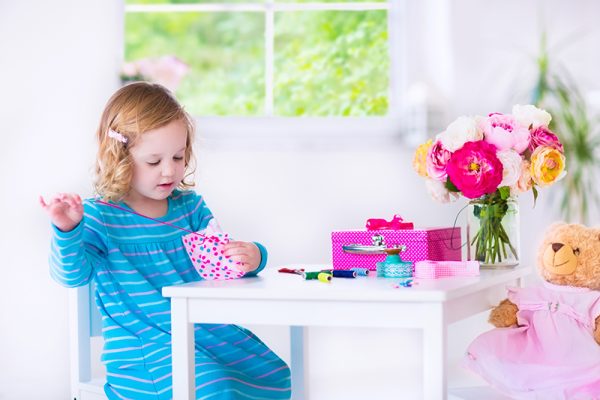How to Teach Your Child to Hand Sew
Sewing seems to be one of those lost arts. Ready made clothing is available everywhere. Bedding and kitchen cloths are at our disposal. Why sew any more? First, because it is one of those lost arts. Second, it is a skill that will remain with you and your children for a lifetime. Once you learn to hand sew (or machine sew for that matter), you never forget how to do it. Just like riding a bike or learning to swim.
Best age to teach your child to hand sew. Only you will be able to gauge the best age. You know your child and his or her ability. A couple of things to look for is interest, though they could lose interest just as fast as they gained it, that does not mean to toss the task to the wayside. Sewing with them will help keep them interested, especially if they know you are engaged and interested too. Their hand-eye coordination. If they have good dexterity, chances are they can handle a needle, thread and a piece of fabric.
Choose sewing materials. There are the traditional materials, such as a needle, thread and fabric. These things may be purchased at a fabric store or craft center. Then there are lacing shapes, which can be purchased from Melissa & Doug, Kaplan Toys, Amazon and many other retailers. All of which may be bought at a reasonable price. Lacing shapes work really well with younger children.
The fun thing about going the traditional route is going to the fabric store and choosing a piece of fabric with your child. Then you can teach them how to buy matching thread and how to choose the right size needles.
Keep it short and simple. The sewing lessons do not have to be very long. 10-20 minutes is probably as long as any young child is going to remain interested and still enjoy it. Listen to your child’s cues. But do not be afraid to push them just a little bit to finish a shape or a line of stitches. Remember to set a timer.
If going the traditional route, the best way to go about the lesson is to cut out 4”x4” squares of fabric and make a nine patch pillow top. After each square is cut, use a ruler and draw pencil lines on the squares about ⅝ ” away from the edge of the fabric all the way across the 4” side. Then draw dots a ¼” apart on the line and show your child how to sew up and down on the dots to make a solid seam. This helps them sew straight and sets them up for success rather than failure.
A full pattern for a nine patch pillow may be found here: http://extension.usu.edu/_sites/4hsewing/sewing/graphics/9Patch.pdf
Be patient. Be patient. Be patient. Patience is worth repeating. Learning a new skill can be challenging. Give your child a chance to make mistakes. There will be knots in laces and thread. Stitches will be crooked. Thread will break. Fingers will be pricked with needles (get a thimble!) and there may be exclamations of, “I can’t do this!” “I don’t want to do this anymore!” Set the timer for 10-20 minutes and keep to it. This helps prevent creating a quitter and builds perseverance.
Great quotes for inspiration in almost anything worth doing:
“The line, ‘if a thing is worth doing, it is worth doing badly,’ is not an excuse for poor efforts. It is perhaps an excuse for poor results. But our society is plagued by wanting good results with no efforts (or rather, with someone else’s efforts). We hire someone else to work for us, to play for us (that is, to entertain us), to think for us, and to raise our children for us. We have left ‘the things worth doing’ to others, on the poor excuse that others might be able to do them better.” ~ from Chesterton’s book, What’s Wrong with the World, 1910.
“Nothing in the world is worth having or worth doing unless it means effort, pain, difficulty… I have never in my life envied a human being who led an easy life. I have envied a great many people who led difficult lives and led them well.” – Theodore Roosevelt.
Anything worth doing does require effort. Be sure you make this fact a part of your sewing lesson. Choose materials that fit your lifestyle, budget and are age appropriate for your child. Keep your lessons short and simple. Remember to be patient with yourself and your child. Last of all, do not forget to have fun and celebrate your accomplishments with a cup of hot cocoa or a tea party. Part of the process is creating memories with your child too.

















